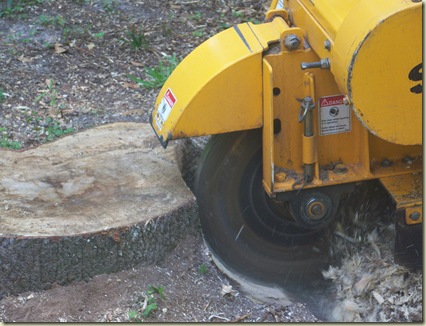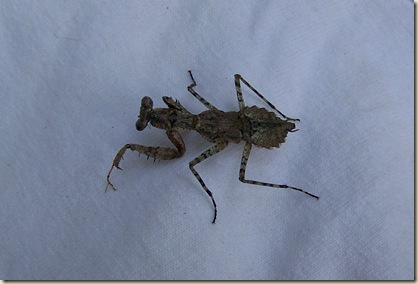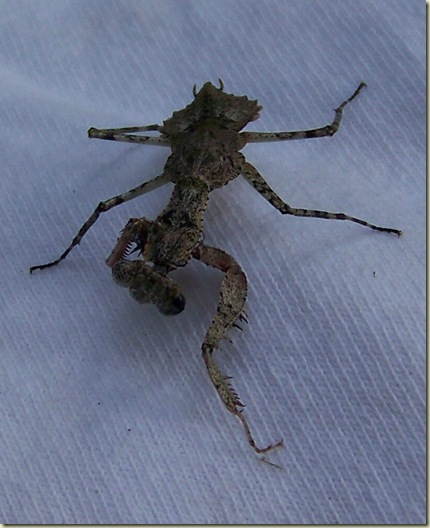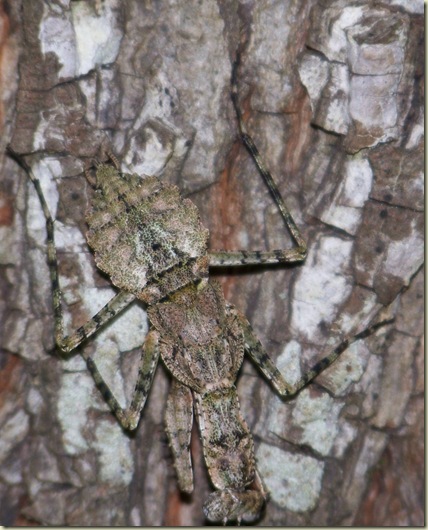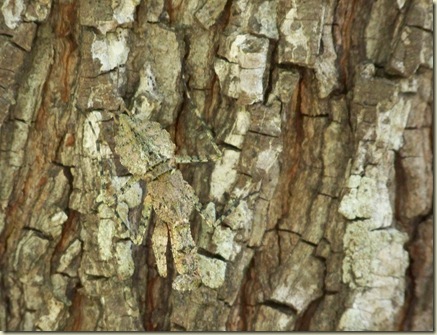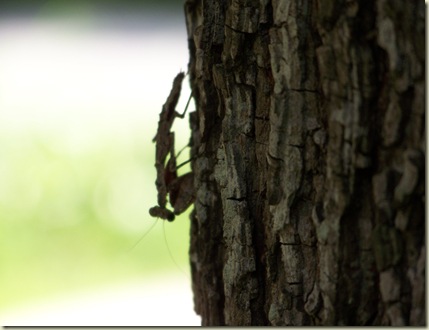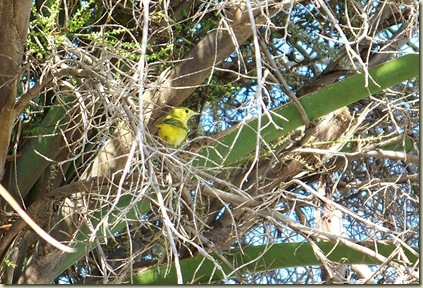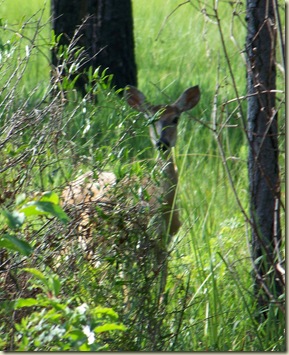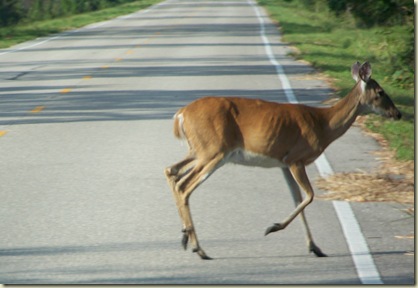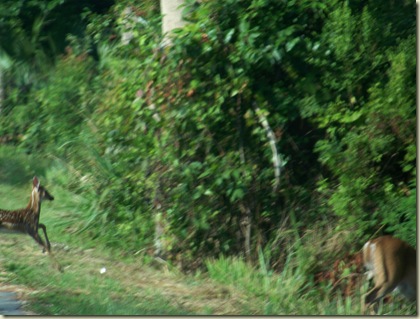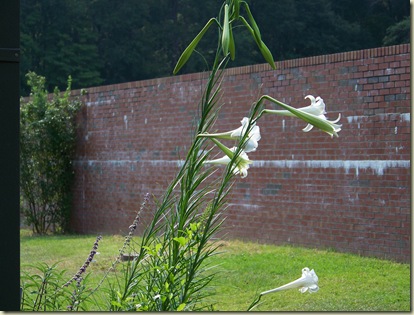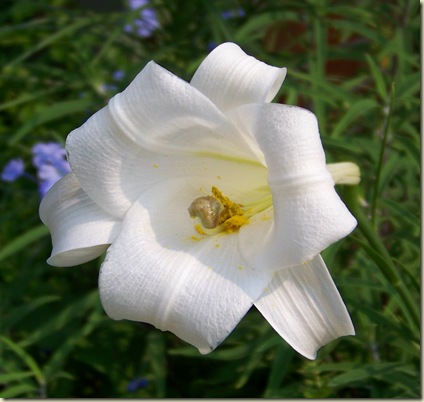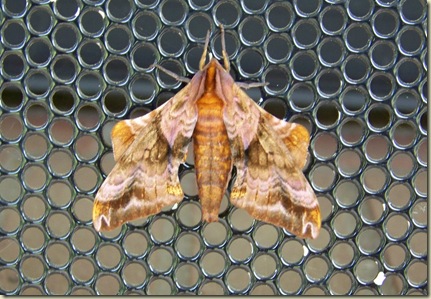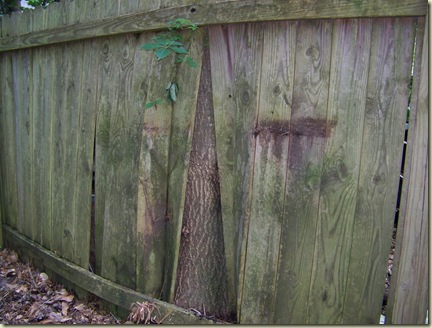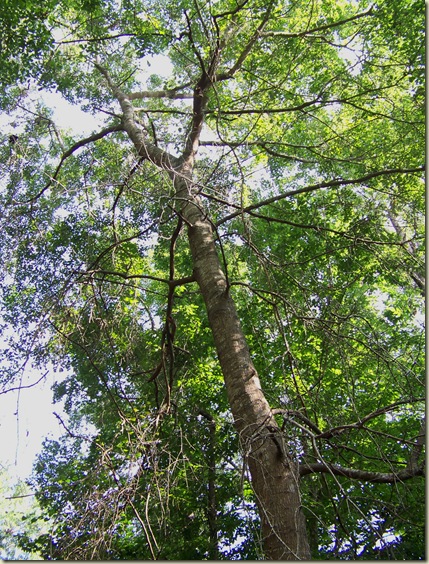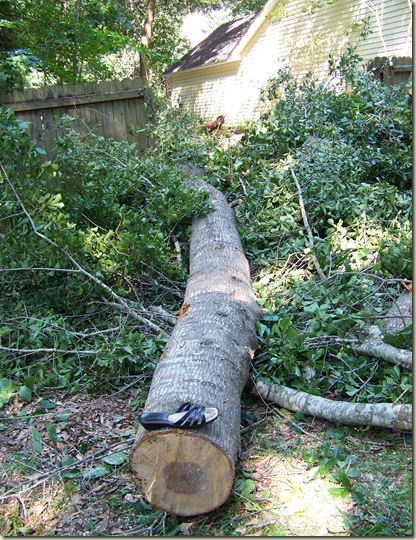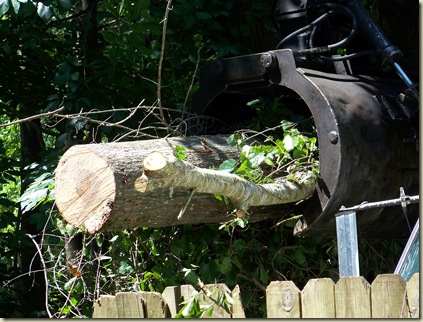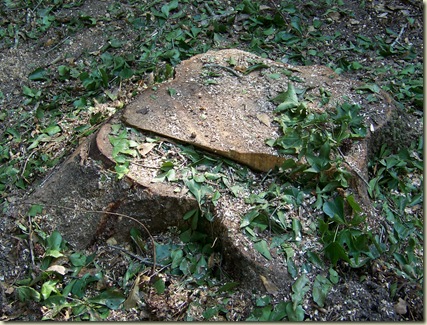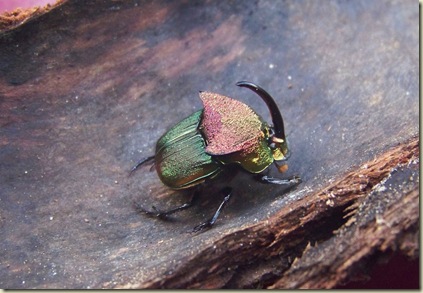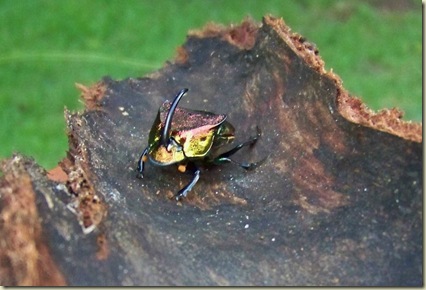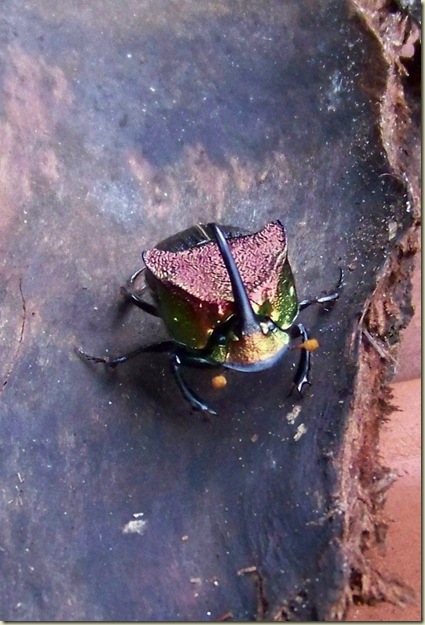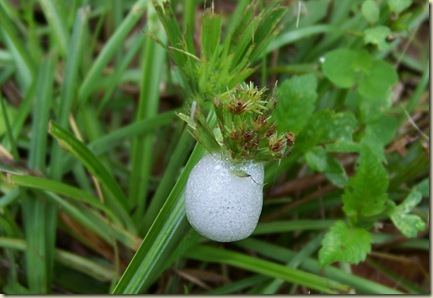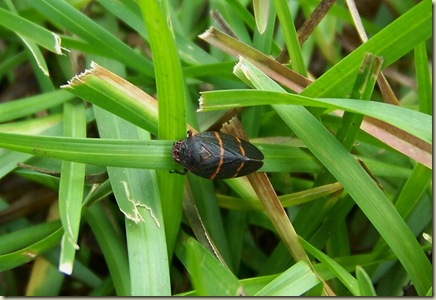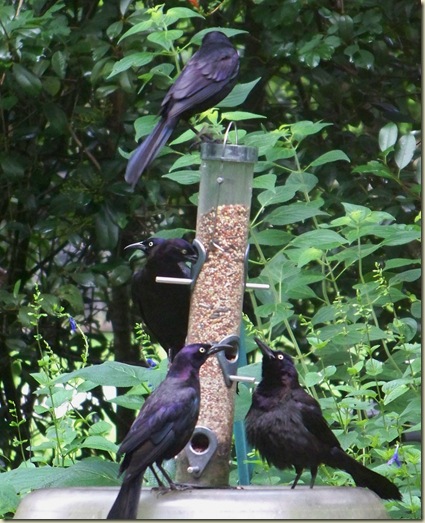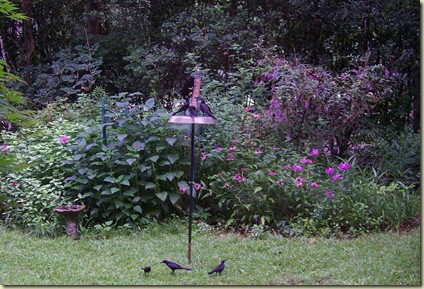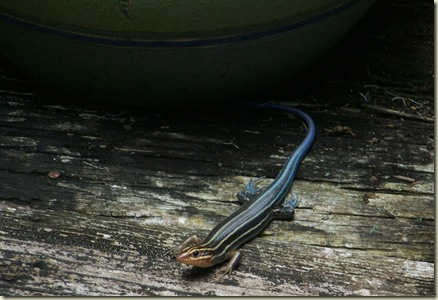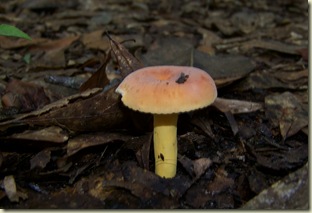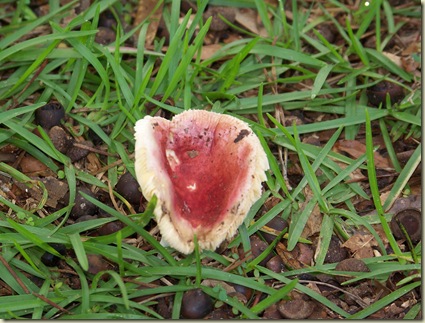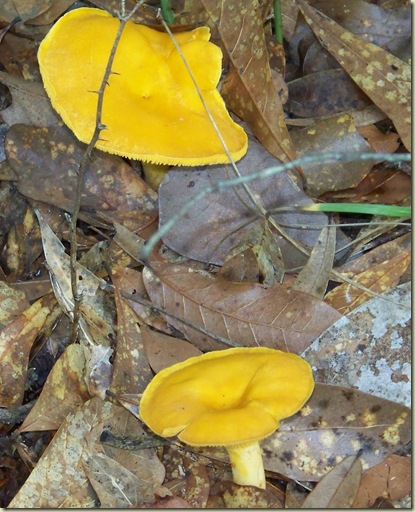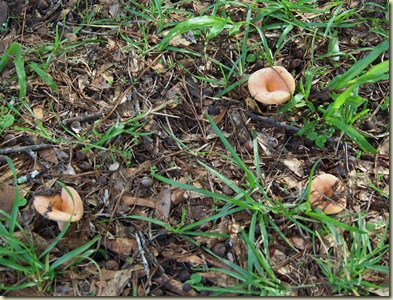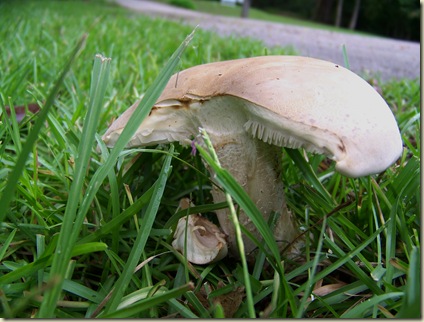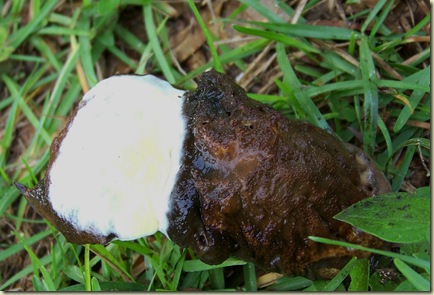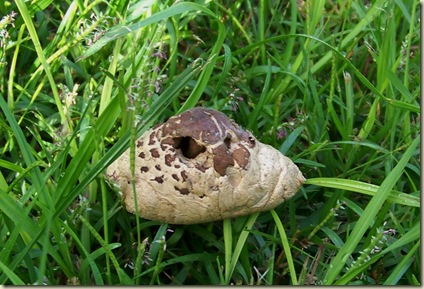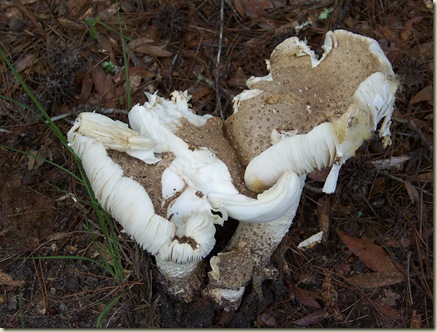I called a stump grinder this morning and by noon we were short three stumps and had three large piles of fine wood chips. It took him just over an hour of work here.
Operated by hydraulics, this monster stump grinder cost $25,000 and is paid for in about 4 months of work. This is the fourth grinder our guy has had.
After driving it into position (he walks along beside it), he begins slowly guiding the blade back and forth and sometimes varying the height to gradually shave down the stump. The wood chips are thrown out.
This stump is almost done.
This blade is used to neatly pile up the wood chips.
The cutting blade has 32 blade points on it.
Note sign: "Danger"---Duh!
This is looking at the blade head-on.
Here is a close-up on the blade points. We may be getting close to actual size here.
Each blade point costs $15 to replace. They have to be ordered. They need regular sharpening which entails removing each one by way of the giant lug nut and taking it to a bench grinder. So there is considerable upkeep on this monster, in addition to feeding it. But I found it to be an amazing machine and I did not leave my window seat view while the work was going on. It was fascinating. Could my interest have come from reading the "Truck Book" over and over (and over!) to our boys when they were little? While there was no stump grinder in the book, there was certainly a lot of different kinds of large equipment in it and we were always on the look out for real life examples of what we saw in that book. Maybe the new edition will have a stump grinder.
This evening, we started hauling away the remains of the oak. That was the one that was pushing down the fence with its growth. We took ten trips with a full wheelbarrow to mulch different plants, mostly in the front yard. The effect is nice but more importantly the plants will benefit from the insulation it provides and it will help retain moisture on these hot summer days. As the wood deteriorates, the nutrients will feed the plants and enrich the soil composition. We are recycling part of our trees.


